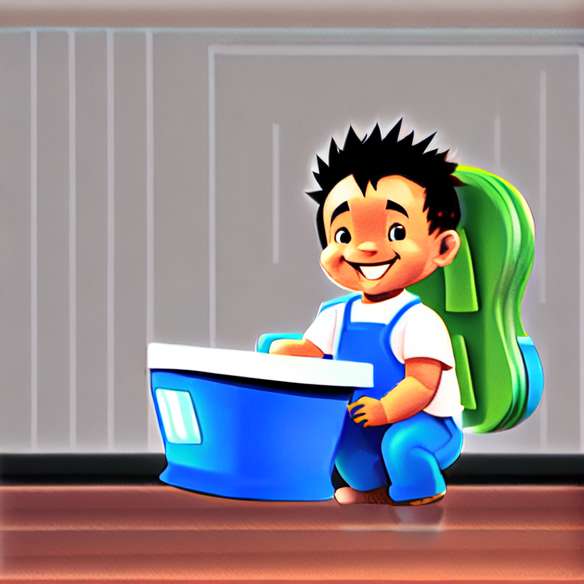Prevention in toddlers, instructions for use

Numbers
For the young children between 0 and 4 years, the interior of the home is the main place of accident (more than 80%) *. Falls are the most frequent since they represent 73% of the causes of accidents in children under 1 year of age (bruises constituting 70% of lesions in children of this age). The most affected part of the body children is the head, three-quarters of life-related disorders (CVAH) among children less than 1 year ** being due to lesions on this part of the body.
The role of adults
As Jean-Paul Lechien, creator and president of the Institute for the Prevention of Domestic Accidents (Ipad), points out, "the only person responsible for accidents occurring at a child under 1 year is the adult. "Indeed, a baby dependent and generally in full learning of the march is far from having integrated all the dangers that involve his various places of life. It is therefore incumbent on the adults around him (parents, grandparents, nannies ...) to ensure his daily safety and for this, there is no miracle device or secret gadget: the only weapon is surveillance. You will never prevent baby to stumble and fall to the ground or to bang on a corner of the table, but you can limit the damage by avoiding the more serious traumas.
At each stage of the child's development, his risks
At each stage of the development of babyyou have to readjust and "update" yourself to ensure your safety.
Here are some guidelines given by the French Federation of Rescue and First Aid (FFSS):
Since birth : make sure you lay him down on his back and never leave him alone except in his bed, whether in his bath, on the changing table, in the house or in the car.
Between 3 and 6 months : baby begins to catch objects within range. He can turn around, roll sideways and fall off the changing table, bed or couch. Gradually, he also begins to sit but he is not able to keep his balance, nor to sit.
Between 6 and 9 months, baby gradually learns to move crawling then on all fours. He also carries all the objects to his mouth: pay attention to the risks of suffocation (small objects, small food ...) and intoxication (tablets taken anti-mosquitoes, basins of bleach ...).
9 to 18 months, baby Stand up and walk. Watch out for falls on the stairs, burns in the kitchen and household products he may swallow. For Jean-Paul Lechien, do not hesitate to congratulate baby and tell him "yes" for each of his progress, so that the latter understands more the meaning of the "no" when he is forbidden something for his good. Especially since, according to him, "a baby always look at his parents when it's time to make a mistake. "It's up to you to adopt the right attitude and not to be indifferent to dissuade him from committing it.
From 18 months, baby is more autonomous. He understands the warnings of his parents but seeks to imitate them by climbing everywhere, which increases the risk of falls. Beware of open windows and furniture or objects placed in front of which could be used as a step.
For 2 years, baby goes up and down the stairs alone, knows how to open the doors and explore the world. Although he is less dependent, he is not aware of most of the dangers. This is not the time to relax the attention.
From 3 yearshe takes insurance, spends a lot of money and starts to master the language. It is gradually making the difference between what is allowed and what is forbidden but it is not able to measure the risks it takes and accidents are often more serious. Continue to warn him and have an eye on him.
Anticipation, vigilance and surveillance
If some prevention gestures make sense, others less. So, to avoid creating a risk situation, always think about:
? Avoid placing a chair under a window,
? Unplug and store the wired charger from the laptop as soon as it is no longer used,
? Do not leave a knife or hot cup on the living room coffee table,
? Monitor baby in his bath (which does not only mean staying in the bathroom and rummaging in his cupboards, for example, turning his back to him, but constantly looking at him), putting out (potentially) dangerous objects like the razor or the hairdryer,
? Do not flood the bed baby soft toys and never let him sleep with a scarf, a cord or a collar, so risks of strangulation and suffocation will be avoided.
? Put toxic products (left in their original container and not decanted into a bottle of mineral water for example) out of the reach of baby, ditto for drugs and DIY tools (we often forget to put them away immediately after use: then count on baby to rush on the cutter or hammer as soon as he sees it dragging on the ground).
And when you arrive in a new environment, whether with friends or in the rental chalet in the mountains, Jean-Paul Lechien advises something a little regressive but always very useful: "get on all fours to explore this new environment and then you will become aware of all that is the scope of baby and potentially dangerous as a placemat on which would be placed a vase a little heavy.
* Source: Invs, Epac 2002 - 2003
** Source: 2002 Health and Social Protection Survey (SPS) of the IRDES on Accidents of everyday life.








